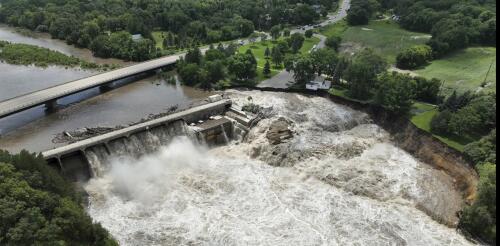Climate change
Scorching temperatures have put millions of Americans in danger during recent heat waves, with heat extremes hitting states from coast to coast. Phoenix hit 110 degrees Fahrenheit (43.3 Celsius) or higher every day for over three weeks in July 2023. Other major cities, from Las Vegas to Miami, experienced relentless high temperatures, which residents described as “hell on earth.” While the evening news runs footage of miserable sunbathers and joggers dousing themselves with water, these images conceal a growing hidden crisis: the millions of older adults who are suffering behind closed doors. As researchers who study older adults’ health and climate change, we have found that two societal trends point to a potentially dire future: The population is getting older, and temperatures are rising. During the July 2023 heat wave, people gathered at the Justa Center, a day cooling center in downtown Phoenix for people age 55...
Between the record-breaking global heat and extreme downpours, it’s hard to ignore that something unusual is going on with the weather in 2023. People have been quick to blame climate change – and they’re right: human-caused global warming plays the biggest role. The weekslong heat wave that started in June 2023 in Texas, the U.S. Southwest and Mexico would have been virtually impossible without it, one study found. However, the extremes this year are sharper than anthropogenic global warming alone would be expected to cause. September temperatures were far above any previous September, and around 3.1 degrees Fahrenheit (1.75 degrees Celsius) above the preindustrial average, according to the European Union’s earth observation program. July was Earth’s hottest month on record, also by a large margin, with average global temperatures more than half a degree Fahrenheit (a third of a degree Celsius) above the previous record, set just a few years earli...
The water off South Florida is over 90 degrees Fahrenheit (32 Celsius) in mid-July, and scientists are already seeing signs of coral bleaching off Central and South America. Particularly concerning is how early in the summer we are seeing these high ocean temperatures. If the extreme heat persists, it could have dire consequences for coral reefs. Just like humans, corals can handle some degree of stress, but the longer it lasts, the more harm it can do. Corals can’t move to cooler areas when water temperatures rise to dangerous levels. They are stuck in it. For those that are particularly sensitive to temperature stress, that can be devastating. A transplanted coral in the Port of Miami that was healthy in early 2023 had bleached in the warm water by July 11, 2023. NOAA/University of Miami I lead the Coral Program at the National Oceanic and Atmospheric Administration’s Atlantic Oceanogra...
Weather forecasts have gotten quite good over the years, but their temperatures aren’t always spot on – and the result when they underplay extremes can be lethal. Even a 1-degree difference in a forecast’s accuracy can be the difference between life and death, our research shows. As economists, we have studied how people use forecasts to manage weather risks. In a new working paper for the National Bureau of Economic Research, we looked at how human survival depends on the accuracy of temperature forecasts, particularly during heat waves like large parts of the U.S. have been experiencing in recent days. We found that when the forecasts underplayed the risk, even small forecast errors led to more deaths. Our results also show that improving forecasts pays off. They suggest that making forecasts 50% more accurate would save 2,200 lives per year across the country and would have a net value that’s nearly twice the annual budget of the National Weather Ser...
Heavy rainfall generated widespread flooding. in the Upper Midwest in late June 2024, putting at least one aging dam at risk. In southern Minnesota, the Blue Earth River cut a path around the Rapidan Dam in Rapidan Township, about 15 miles south of Mankato, on June 24, putting the structure at imminent risk of failing. Officials warned local residents that if the dam burst, the river could rise by 2 feet, but said that evacuations were not needed. This event comes a year after flooding in Vermont collapsed at least one dam and threatened others. Hiba Baroud, associate professor and associate chair in the department of civil and environmental engineering at Vanderbilt University, explains how flooding stresses dams in a changing climate. How serious is the risk when water flows over or around a dam? These conditions can result in erosion, which subsequently could lead to a dam breach or failure and a sudden, uncontrolled release of impounded water. The risk reflects the combin...




